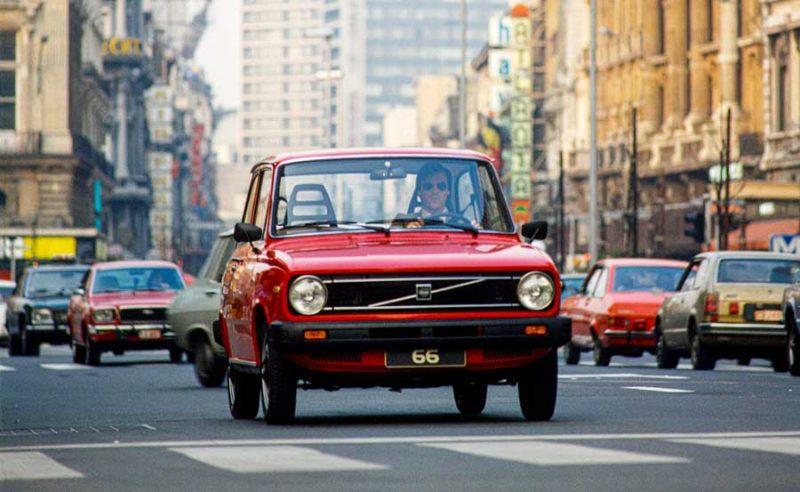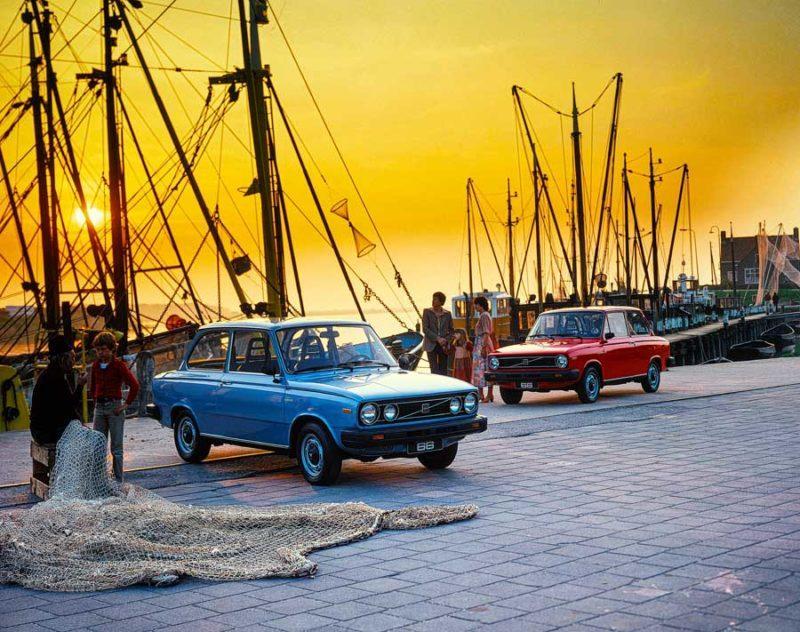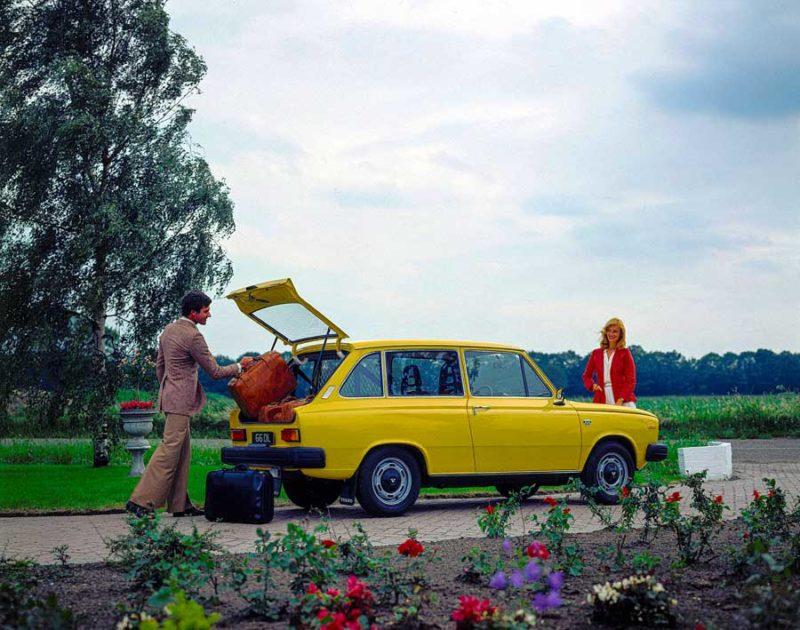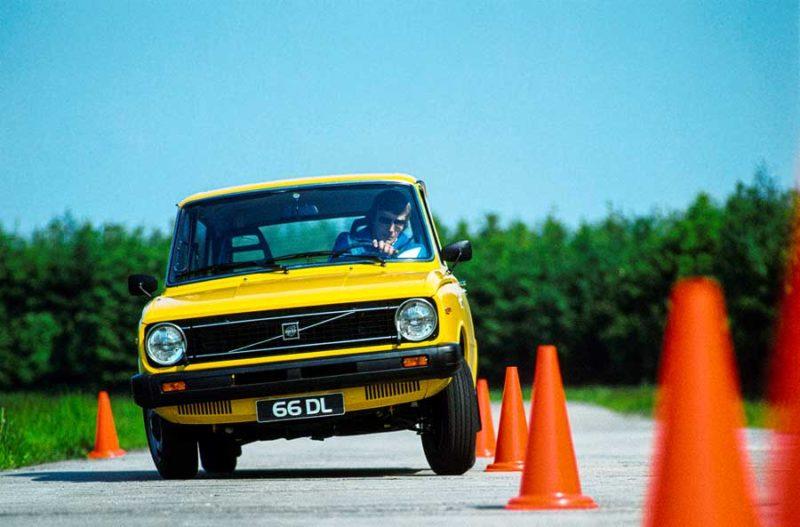On 1 January 1975, Volvo takes a majority stake in the DAF passenger car division. At that time, the Eindhoven brand has the recently launched 46 and the 1972 on the market since 66 as an offer within the "people" delivery program. After the expansion of the DAF Car BV stake, the Swedes reorganize and subsequently set up 1 Volvo Car BV on 1975 May. The memorable event paves the way for the arrival of the Volvo 66.
The DAF 66 is a good starting point for the Swedes to round off the Scandinavian model range. It is decided to scrap the compartment. The sedan and combi are mainly adapted to Volvo standards in terms of safety. The design of the body hardly changes compared to the DAF - in both two and three-door trim, however. The Volvo 1 was born on 1975 August 66. He succeeds the DAF 66 definitively and thus marks the end of the passenger car brand DAF, which in 1977 with the two cylinder 46 disappears permanently from the scene.
Extensive package of safety measures
At first glance, the newcomer looks very similar to its DAF predecessor. Still, it is impossible to confuse the two. The Volvo 66 is equipped with a new grille with Volvo signature and thick rubber bumpers, which should keep the sheet metal damage free in case of minor collisions.
But real safety-enhancing factors are also added to Michelotti's design. The tires are provided with wear indicators. The braking system is equipped with an exciter as standard. The 66 disc brakes will also be fitted to the front. The windshield is made of laminated glass. The wiper blades resting on it have a larger size. In the passenger compartment reinforced with steel profiles, new seats (initially only with fireproof material) with integrated headrests are placed. Three-point seat belts with an automatic retractor and an adapted steering wheel also make their entrance into the interior.
Another change concerns the 25% higher heater capacity. Furthermore, the improved rust prevention should also help to extend the life of the Volvo 66. And there are a few other adjustments that should indicate the differences with the DAF 66.
Reverse shift direction, unchanged chassis
From a technical point of view, Volvo did stick to the CVT transmission on the 66, albeit that the shift pattern was applied in reverse to the DAF. The same cartridge is inserted with a new gear lever fitted with a locking button. The indicated driving directions are also illuminated. The chassis remains the same as the DAF 66. The handling of the Volvo 66 keeps the same stable character as that of its Dutch predecessor. The expensive but advanced The Dion rear axle - which was mounted in 1972 under the then new DAF 66 - is maintained at the Volvo 66.
Engines are taken from DAF 66
No adjustments are made to the motor either. The engines from the DAF 66 - 1108 cc and 1289 cc power sources from Renault - are taken over one-to-one. The former finds its way into the DL execution level. From 1979 onwards, it is also placed in the new savings version “L”. The GL gets the larger engine. Items such as halogen high-beam headlights (four headlights), lighting in the luggage room and a tunnel console are also added to the most luxurious equipment level.
GT kit
A special GT kit is being developed by Gunnar Andersson, former rally driver and head of Volvo's sporting arm. At an additional cost, the 66 with 1300 engine can be equipped with a power increase to 76 HP, which is enhanced by black stickers, elegant aluminum rims and extra lamps.
In the Netherlands, the kit can also be ordered as a personalization package without an increase in power. Such a personalized version is popularly known as “GLS”. The badges and stickers, however, provide the basis: officially this version will also continue to be called “GL”.
Stable career with few changes
Despite some criticisms (high price, modal performance), the 66 is a reasonable success for Volvo. There are hardly any changes to the concept. The most important change concerns the placement of real safety bumpers and openwork fixed headrests. At the end of 1980 - after a production of 113.431 units - the career of the Volvo 66 comes to an end.
Also read:
- Daf, a day out with a smile
- The DAF sport Coupé. Why the most beautiful car from Eindhoven never went into production
- Impression Volvo 340 GL 1.4 automatic (1987). Adult culture guard
- Volvo 440
- Daf 66 Marathon. A sporty Daf










The Volvo 66 gls combi was produced in the Netherlands
Limited edition in orange
With black striping lmv s orange black trim
And a sports steering wheel as a sweetener because the
Volvo 343 was delayed.
That was in the spring of 1976.
Nice article
No, the Volvo 66 did not mean the end of Daf, because the 46 was produced under the brand name Daf for another two years. Apparently, the Swedes thought the two-cylinder was just a bit too brief to go through life as a Volvo.
One hundred kilos heavier and about one and a half times more expensive than the Daf 66, was the conclusion of the car press. This was mainly due to the reinforcements against collisions in the doors, roof and front. However, the Volvo 66 inherited Daf's loyal customer base, who was used to driving the Variomatic and did not opt for the then usual three-speed automatic transmission from other brands. It was therefore a very well built and wonderfully handling small car with the silky soft Renault Cléon-Fonte in the front. You could buy them for an apple and an egg in the 90s, often from older people and well maintained. And then they fell prey to the rear racers and stock cargekie. Some use the 1400 engine of the 340, from 45/55 to 72 hp you notice quite a bit.
The article speaks of CVT but it means Variomatic (or not….). The DAF was a very progressive, sporty and iron car. The 55 showed this profile in many rallies and in practice, but remained underexposed in the market. No wonder Volvo fell in love with it and eventually took over DAF passenger cars. There was a man's sign on the grille (how would that be explained now?) And Brabant knowledge & skills went to automotive in the Eindhoven-Helmond region and BOSCH in Tilburg. And from there all over the world 👍
Jeroen the Variomatic was indeed called CVT by Volvo and Bosch still calls it that.
Olav ten Broek, the CVT is technically quite different from the Variomatic.
The Variomatic is a belt drive, while the CVT is a push chain.